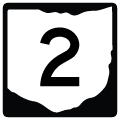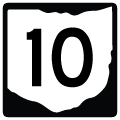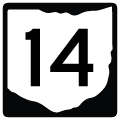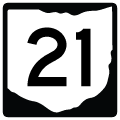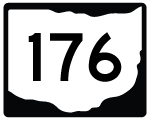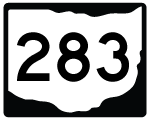Cleveland has seen something of a renaissance from the mid 1980s to the mid 2000s. A brief chronology of the improvements that have made Cleveland into what it is today, including the evolution of Cleveland’s sports and entertainment franchises courtesy of Steve Hanudel:
- May 1984 – voters reject a tax proposal to build a domed stadium in the Gateway area (where Jacobs Field and Gund Arena now sit).
- 1986 – Site rights for the building of the Rock and Roll Hall of Fame awarded to Cleveland.
- December 1986 – Richard Jacobs (a Northeastern Ohio mall developing mogul) and his brother buy the Cleveland Indians for $35 million. They enact their “Blueprint for Success” which provided goals to turn around a hapless franchise and lobby for a new ballpark. He hires Hank Peters as General Manager, who starts building the farm system by hiring the best scouts, making the best draft picks (i.e. Albert Belle, Manny Ramirez, Jim Thome, Charles Nagy), and trading top talent for multiple young farmhands (Joe Carter was traded to San Diego for Sandy Alomar, Carlos Baerga, and Chris James). Later, John Hart would be under Peters’ wing and succeed him as General Manager in 1992. Mike Hargrove took over as manager during the 1991 season and held onto it through 1999.
- Mid-1980s – the Cuyahoga County slowly acquires land in the Gateway area in anticipation that someday a new sports facility will be built there.
- 1990 – Tower City Mall (officially called The Avenue at Tower City) opens in place of the old union rail station at Terminal Tower.
- May 1990 – Voters in Cuyahoga County pass a sin tax (alcohol and tobacco) to finance the building of a new ballpark and arena at the Gateway area. The county immediately begins selling bonds and the site starts being cleared away. Cuyahoga County began selling bonds in December 1990. All of the bonds were sold within a day.
- Early 1990s – The Flats area undergoes a facelift, turning an old industrial area to a popular nightspot. Both the west and east sides of the Flats are popular hangouts. One of the reasons why the Indians had a hard time keeping good players was that the city had no nightlife. Now, this would no longer be the case.
- April 1994 – Jacobs Field (named after the Indians owner) opens. Cleveland beats the Seattle Mariners 4-3 in 11 innings in the first ever game. The new park attracted free agents such as Orel Hershiser, Dennis Martinez, and Eddie Murray. The Indians young talent would turn into winning record this year, but their playoff hopes were dashed in the season-ending strike. In 1995, they would go 100-44 and win the American League pennant for the first time since 1954 (Northeastern Ohioans were ecstatic over this). However, they would fall to the Atlanta Braves 4-2 in the World Series. Overall, the new park brought a resurgence of fans, eager to see the new ballpark and a good team (first time in a long time). This would obviously spark economic growth in the surrounding area. From June 12, 1995, to April 2001, Jacobs Field experienced a sell out streak of 455 consecutive games.
- November 1994 – Gund Arena opens (named after the Cavs owner) and the Cavs abandon the fan favorite Richfield Coliseum (which was on Ohio 303 just off of Interstate 271). Gund Arena would never be as popular as Jacobs Field because the seating for the average fan was not very good and the ticket prices were high. Richfield Coliseum was torn down a few years ago and forest was replanted there to blend it back into Cuyahoga Valley National Park.
- September 1995 – Rock and Roll Hall of Fame opens on the lakefront. Shortly thereafter, the Great Lakes Science Center opened next door, which has an Omnimax theater. The Science Center is mainly for kids, but adults definitely enjoy the Omnimax.
- November 1995 – Art Modell announces that he will move the Browns to Baltimore, claiming that his tight finances left him with no choice. He never was very good with his money. Also, he wasn’t too happy that the Indians got a new stadium, but the Browns didn’t. Since Modell had always said he would never move the team, the city took him for granted, thus never bothered to give a new stadium deal. The voters would pass a sales tax to improve Cleveland Municipal Stadium, but it was too late. All in all, fans were just absolutely livid and furious over the announced move. People from all over Northeastern Ohio rallied to do whatever they could to convince the NFL not to allow Modell to move. The city had one last legal move in the bag. In 1973, Modell signed a 25-year pact with the city to use Cleveland Stadium. That meant he was obliged to fulfill the remaining terms of the contract through 1998. The city sued and a temporary restraining order was placed to prevent the move while a future legal battle ensued. Eventually, since the NFL didn’t want the legal mess, they negotiated with the city and came up with a compromise – the city drops the lawsuit, lets the team move, and the NFL will guarantee a team (whether existing or expansion) in Cleveland by 1999 provided that the city gets rid of the old stadium and replaces it with a new one. Also, the city kept the Browns history and colors, leaving Modell with a “new” team in Baltimore that would have new name and colors. Therefore, the Browns became the first expansion team in any sport to have a history.
- 1996-1999 – Cleveland Municipal Stadium is torn down and made into a fish reef in Lake Erie. The new stadium is built and named Cleveland Browns Stadium (by Al Lerner – he pretty much preserves many of the old Browns traditions).
- September 1998 – Al Lerner (founder of MBNA, and former minority owner of the Browns) buys the new expansion Browns for $530 million. His main partner and future president is Carmen Policy (Youngstown native), the man behind building the 49ers’ dynasty in the 1980s. There was a lot of controversy regarding Lerner because it was on his private plane that Modell signed the deal with the city of Baltimore to move the Browns. Lerner contended that he had nothing to do with the decision on the move, said that he disagreed with it, and no longer has any contact with Modell. The skepticism has worn off since Lerner has proven himself to be a hands off owner willing to open his wallet to build a good team.
Limited Access Highways
U.S. Routes
Ohio State Routes








Cleveland Streets, Bridges and Parks

The Cleveland Flats is a former industrial area converted into a nightclub and bar spot. The Flats are located along the east bank of the Cuyahoga River, which gained infamy in the 1970s for burning due to the industrial chemicals floating in the water. Since this is a major shipping and port area, industry is immediately visible on the other side of the river from this location.
05/25/02

Located within Public Square in Downtown, the Soldiers' and Sailors' Monument lists the names of over 9,000 soldiers from Cuyahoga County that fought in the Civil War. The structure was created in 1894.1
08/10/06

Terminal Tower is one of Cleveland's signature high rises. Situated on the south side of Public Square, the 52 story building is the second highest skyscraper in the city. Opened in 1930, Terminal Tower was the tallest building outside of New York City until 1967.2
08/10/06

Built in 2002, the Carl B. Stokes Federal Courthouse building rises between Huron and Canal Roads along the Cuyahoga River.
08/10/06

Canal Road parallels Huron Road beside the Cuyahoga River by the Tower City Center retail complex.
08/10/06

The Landmark Office Towers are located next to Tower City Center between Huron Road and Prospect Avenue.
08/10/06

SR 10 crosses the Cuyahoga River over the Lorain Carnegie Hope Memorial Bridge. The abandoned Erie Avenue Bridge, a vertical lift bridge, spans the river to the north.
08/10/06

Built in 1953, the Flats Industrial Railroad Lift Bridge spans the Cuyahoga River at French Street and Columbus Road.
08/10/06

Adjacent to the Carter Road Bridge is the abandoned New York Central Bridge, a through truss bridge built in 1953.4
08/10/06

The RTA Rapid Transit Bridge and the Detroit Superior - Veterans Memorial Bridge for U.S. 6/20/42 cross the Cuyahoga River west of the Carter Road Bridge.
08/10/06

The Sherwin-Williams Breen Technology Center lines the Cuyahoga River along Canal Road below Tower City Center.
08/10/06

Rocket Mortgage FieldHouse (home of the Cleveland Cavaliers) and Progressive Field (home of the Cleveland Guardians) appear east of the Cuyahoga River from the Carter Road Bridge.
08/10/06

SR 10 (Hope Memorial Bridge) crosses the Cuyahoga River beyond the industrial area along Carter Road and Scranton Road.
08/10/06

The Center Street Bridge is a swing through truss bridge crossing the Cuyahoga River from Ohio City to the Flats.
09/30/10

Built in 1901,5 the Center Street Bridge passes below the Detroit-Superior Veterans Memorial Bridge (U.S. 6/20/42).
09/30/10

Named for bootlegging that once occurred there, Wendy Park occupies a portion of Whiskey Island by the mouth of the Cuyahoga River.6
08/10/06
Sources:
- Soldiers’ and Sailors’ Monument (Cleveland). Wikipedia.
- Terminal Tower. Wikipedia.
- Carter Road Bridge. Bridgehunter.com.
- NYC – DK Yard Drawbridge. Bridgehunter.com.
- Center Street Bridge. Bridgehunter.com.
- Wendy Park at Whiskey Island, Cleveland Ohio.
Page Updated August 5, 2018.

